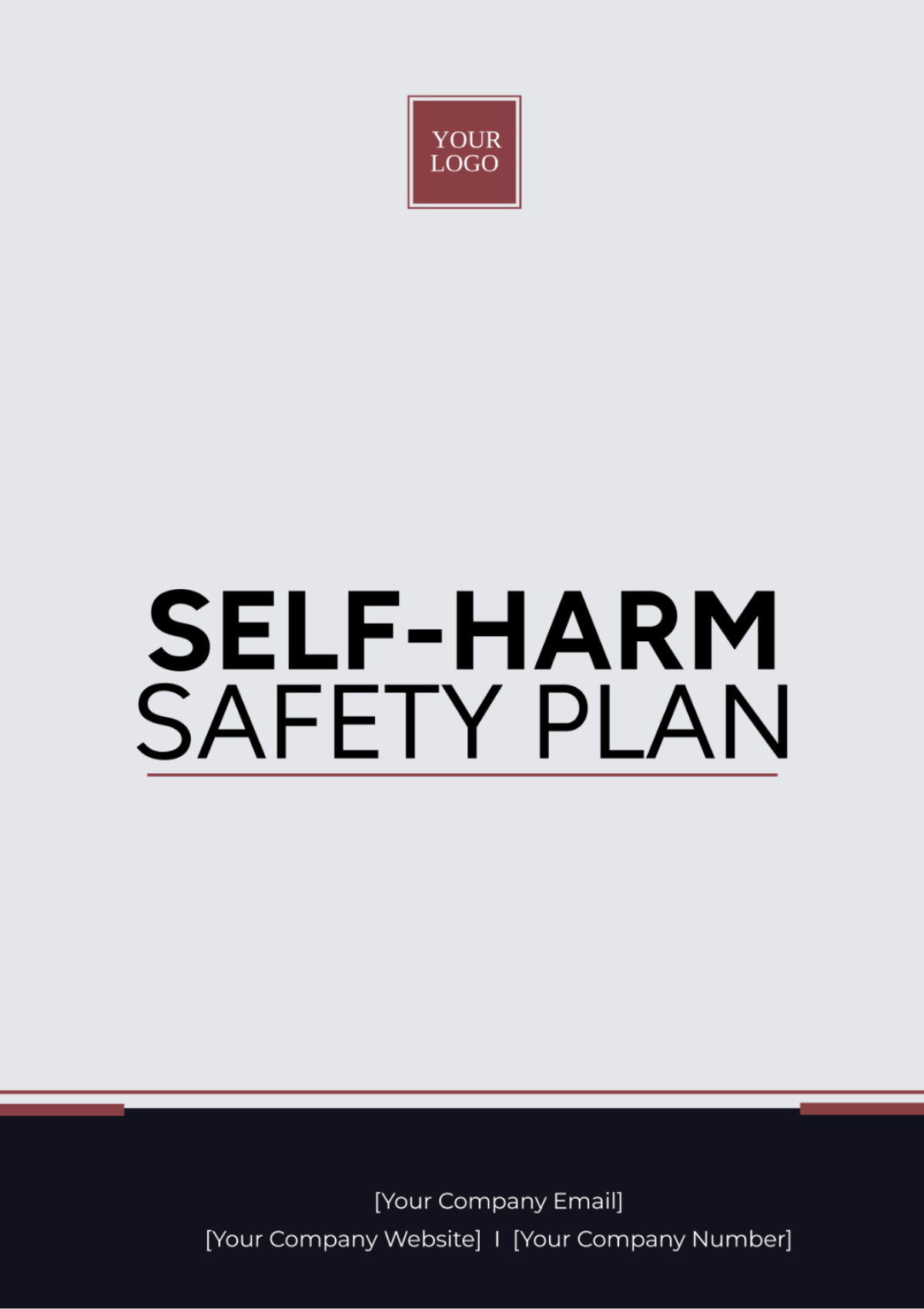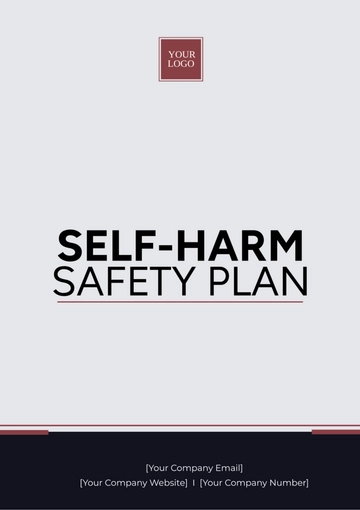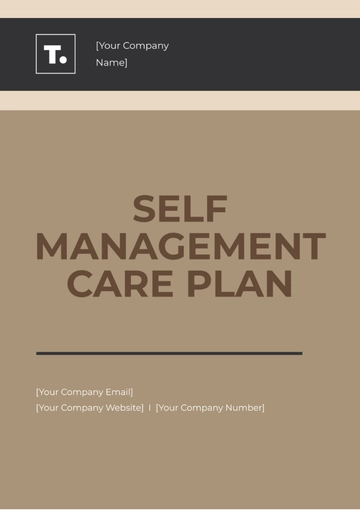Free Self Harm Safety Plan

I. Introduction
Welcome to the Self-Harm Safety Plan, designed to provide support and guidance for individuals struggling with self-harm behaviors. This personalized document outlines strategies and steps to prevent and manage self-harm effectively.
A. Purpose
The purpose of this Self-Harm Safety Plan is to:
Provide individuals with practical tools and resources to cope with self-harm urges.
Assist in the identification of warning signs and triggers.
Facilitate crisis management and access to professional support.
B. Scope
This Self-Harm Safety Plan encompasses:
Personalized coping strategies and techniques.
Emergency contacts for immediate assistance.
Steps for implementing the safety plan during crises.
II. Personal Information
Name: [Your Name]
Date: [Current Date]
Emergency Contacts:
Primary Contact:
Name: [Primary Contact Name]
Relationship: [Relationship]
Phone Number: [Primary Contact Number]
Secondary Contact:
Name: [Secondary Contact Name]
Relationship: [Relationship]
Phone Number: [Secondary Contact Number]
III. Warning Signs
1. Emotional Signs:
Feeling overwhelmed: Sensation of being inundated or unable to cope with stressors, leading to feeling emotionally swamped.
Extreme sadness or depression: Intense feelings of sorrow or despair, often accompanied by a lack of interest in activities, changes in appetite or sleep patterns, and persistent negative thoughts.
Intense anger: Overwhelming feelings of rage or fury, often leading to outbursts, irritability, and difficulty controlling impulses.
2. Physical Signs:
Increased heart rate: Noticeable elevation in heart rate, indicating heightened physiological arousal often associated with anxiety, stress, or agitation.
Clenching fists: Tightening the hand muscles into a fist-like position, indicative of tension, frustration, or anger.
Pacing: Restless or repetitive walking back and forth, reflecting inner turmoil, agitation, or needing to release excess energy.
IV. Components of the Self-Harm Safety Plan
A. Personal Triggers and Warning Signs
Identify personal triggers and warning signs that may precede self-harm behaviors.
B. Coping Strategies
Positive Distractions: Engage in activities that provide a sense of calm and distraction.
Self-Soothing Techniques: Practice relaxation exercises such as deep breathing or mindfulness.
Social Support: Reach out to trusted friends, family members, or support groups for emotional support.
Professional Support: Contact mental health professionals or crisis hotlines for immediate assistance.
C. Professional Resources
1. Therapist/Counselor
Name: [Therapist Name]
Phone Number: [Therapist Contact Number]
2. Crisis Hotlines
List emergency contact numbers for immediate assistance:
National Suicide Prevention Lifeline: 1-800-273-8255
Crisis Text Line: Text "HELLO" to 741741
D. Safety Plan Implementation
Step-by-Step Guide: Provide a step-by-step guide on implementing the safety plan during a crisis.
Practice Scenarios: Role-play potential crises to prepare for real-life emergencies.
V. Review and Updates
Regularly review and update the Self-Harm Safety Plan to:
Reflect changes in triggers, coping strategies, or support networks.
Incorporate feedback from the individual and their support network.
Ensure the plan remains relevant and effective in managing self-harm behaviors.
VI. Conclusion
The Self-Harm Safety Plan serves as a valuable tool in preventing and managing self-harm behaviors. By identifying triggers, implementing coping strategies, and accessing support networks, individuals can navigate through moments of crisis with resilience and strength. Remember, you are not alone, and help is always available.
For queries or further information, please contact:
Company: [Your Company Name]
Phone Number: [Your Phone Number]
Email: [Your Email]
Address: [Your Company Address]
Website: [Your Company Website]
Social Media: [Your Company Social Media]
- 100% Customizable, free editor
- Access 1 Million+ Templates, photo’s & graphics
- Download or share as a template
- Click and replace photos, graphics, text, backgrounds
- Resize, crop, AI write & more
- Access advanced editor
Support mental health with Template.net’s Self Harm Safety Plan Template. This editable and customizable template, easily editable in our AI Tool, provides a structured plan to manage self-harm risks and ensure personal safety.
You may also like
- Finance Plan
- Construction Plan
- Sales Plan
- Development Plan
- Career Plan
- Budget Plan
- HR Plan
- Education Plan
- Transition Plan
- Work Plan
- Training Plan
- Communication Plan
- Operation Plan
- Health And Safety Plan
- Strategy Plan
- Professional Development Plan
- Advertising Plan
- Risk Management Plan
- Restaurant Plan
- School Plan
- Nursing Home Patient Care Plan
- Nursing Care Plan
- Plan Event
- Startup Plan
- Social Media Plan
- Staffing Plan
- Annual Plan
- Content Plan
- Payment Plan
- Implementation Plan
- Hotel Plan
- Workout Plan
- Accounting Plan
- Campaign Plan
- Essay Plan
- 30 60 90 Day Plan
- Research Plan
- Recruitment Plan
- 90 Day Plan
- Quarterly Plan
- Emergency Plan
- 5 Year Plan
- Gym Plan
- Personal Plan
- IT and Software Plan
- Treatment Plan
- Real Estate Plan
- Law Firm Plan
- Healthcare Plan
- Improvement Plan
- Media Plan
- 5 Year Business Plan
- Learning Plan
- Marketing Campaign Plan
- Travel Agency Plan
- Cleaning Services Plan
- Interior Design Plan
- Performance Plan
- PR Plan
- Birth Plan
- Life Plan
- SEO Plan
- Disaster Recovery Plan
- Continuity Plan
- Launch Plan
- Legal Plan
- Behavior Plan
- Performance Improvement Plan
- Salon Plan
- Security Plan
- Security Management Plan
- Employee Development Plan
- Quality Plan
- Service Improvement Plan
- Growth Plan
- Incident Response Plan
- Basketball Plan
- Emergency Action Plan
- Product Launch Plan
- Spa Plan
- Employee Training Plan
- Data Analysis Plan
- Employee Action Plan
- Territory Plan
- Audit Plan
- Classroom Plan
- Activity Plan
- Parenting Plan
- Care Plan
- Project Execution Plan
- Exercise Plan
- Internship Plan
- Software Development Plan
- Continuous Improvement Plan
- Leave Plan
- 90 Day Sales Plan
- Advertising Agency Plan
- Employee Transition Plan
- Smart Action Plan
- Workplace Safety Plan
- Behavior Change Plan
- Contingency Plan
- Continuity of Operations Plan
- Health Plan
- Quality Control Plan
- Self Plan
- Sports Development Plan
- Change Management Plan
- Ecommerce Plan
- Personal Financial Plan
- Process Improvement Plan
- 30-60-90 Day Sales Plan
- Crisis Management Plan
- Engagement Plan
- Execution Plan
- Pandemic Plan
- Quality Assurance Plan
- Service Continuity Plan
- Agile Project Plan
- Fundraising Plan
- Job Transition Plan
- Asset Maintenance Plan
- Maintenance Plan
- Software Test Plan
- Staff Training and Development Plan
- 3 Year Plan
- Brand Activation Plan
- Release Plan
- Resource Plan
- Risk Mitigation Plan
- Teacher Plan
- 30 60 90 Day Plan for New Manager
- Food Safety Plan
- Food Truck Plan
- Hiring Plan
- Quality Management Plan
- Wellness Plan
- Behavior Intervention Plan
- Bonus Plan
- Investment Plan
- Maternity Leave Plan
- Pandemic Response Plan
- Succession Planning
- Coaching Plan
- Configuration Management Plan
- Remote Work Plan
- Self Care Plan
- Teaching Plan
- 100-Day Plan
- HACCP Plan
- Student Plan
- Sustainability Plan
- 30 60 90 Day Plan for Interview
- Access Plan
- Site Specific Safety Plan


